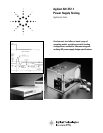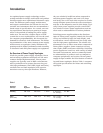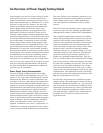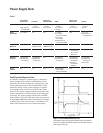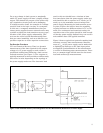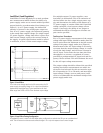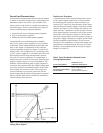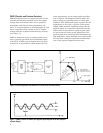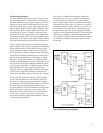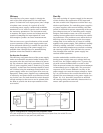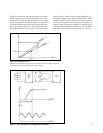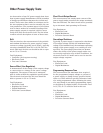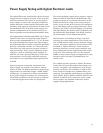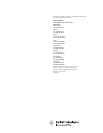
3
Power supplies are used in a wide variety of prod-
ucts and test systems. As a result, the tests per-
formed to determine operating specifications can
differ from manufacturer to manufacturer, or from
end user to end user. For instance, the tests per-
formed in an R&D environment are primarily for
power supply design verification. These tests
require high performance test equipment and a
high degree of manual control for bench use. In
contrast, power supply testing in production envi-
ronments primarily focus on overall function based
on the specifications determined during the prod-
ucts design phase. Automation is often essential
due to large volume testing, which requires high
test throughput and test repeatability. Power sup-
ply test instruments must then be computer pro-
grammable. For both test environments, measure-
ment synchronization is necessary to perform some
tests properly and to obtain valid data. In addition,
considerations such as test set reliability, protec-
tion of the power supply under test, rack space,
and total cost of ownership may be of equal impor-
tance to the power supply test set designer. Proper
selection of testing instrumentation will provide
the best combination of measurement sophistica-
tion and test set complexity.
Power Supply Testing Instrumentation
The power supply testing methods and configu-
rations discussed in this application note are cer-
tainly not the only means of obtaining the desired
measurements. However, certain instruments are
essential to all tests, regardless of the implementa-
tion. Some commercially available turnkey power
supply test systems incorporate custom board level
instrumentation and hand wiring. However, power
supply test systems based on standard products
afford greater benefits. These systems are more
reliable and provide repeatable, high performance
measurements because of their low noise environ-
ment. A system which utilizes standard instrumen-
tation is modular, allows configuration flexibility
based on performance needs, and is easier to
upgrade. In addition, the service, replacement, or
calibration of separate instruments in the system
can be performed with minimal system down-time.
The tests covered in the following section are con-
figured with standard instrumentation: electronic
loads, digital oscilloscopes, digital multimeters,
true rms voltmeters, wattmeters, and AC power
sources.
Electronic loads can facilitate power supply testing
in several ways. They are typically programmable,
although most require external DAC programmers.
This capability enables finer control over loading
values during testing, and can provide the test set
operator with valuable status information. These
loads are often designed with FETs, which provide
increased reliability over less sophisticated solu-
tions consisting of relays and resistors. Also, these
products offer a selection of operating modes:
constant current (CC), constant voltage (CV), and
constant resistance (CR). The more sophisticated
electronic loads provide all three modes in one
product for optimum testing flexibility. They pro-
vide a versatile solution for testing both DC voltage
and current sources. A final advantage is provided
by loads with readback over the bus. This can elim-
inate the need for digital multimeters for voltage
and current measurements in some tests. As men-
tioned, there are varying degrees of electronic load
sophistication. The Agilent Electronic Load family
provides all of the most sophisticated features and
high level performance in one box.
Several other instruments are required for power
supply testing. The performance criteria (accuracy,
resolution, stability, bandwidth, etc.) vary for each
test. In general, the measurement capability of the
instruments should ensure an error no greater than
10% of the measured specification. Table 2 on the
next page provides a guideline for instrument per-
formance levels for each test discussed in this
application note.
An Overview of Power Supply Testing Needs



